Humidity, low light, and limited space often make bathrooms feel like a challenge for greenery—but some plants thrive exactly in those conditions. Whether you’re seeking a more serene routine or want to freshen up the air, the right plant can change the energy of your space instantly. From easy-care picks that suit busy mornings to aesthetic options that boost your decor, this curated list focuses on solutions that work in real bathrooms—not just design catalogs. Keep reading for low-maintenance, high-impact ideas that fit every space, from powder rooms to compact showers, without demanding time or effort you don’t have.
Air Plants (Tillandsia spp.)
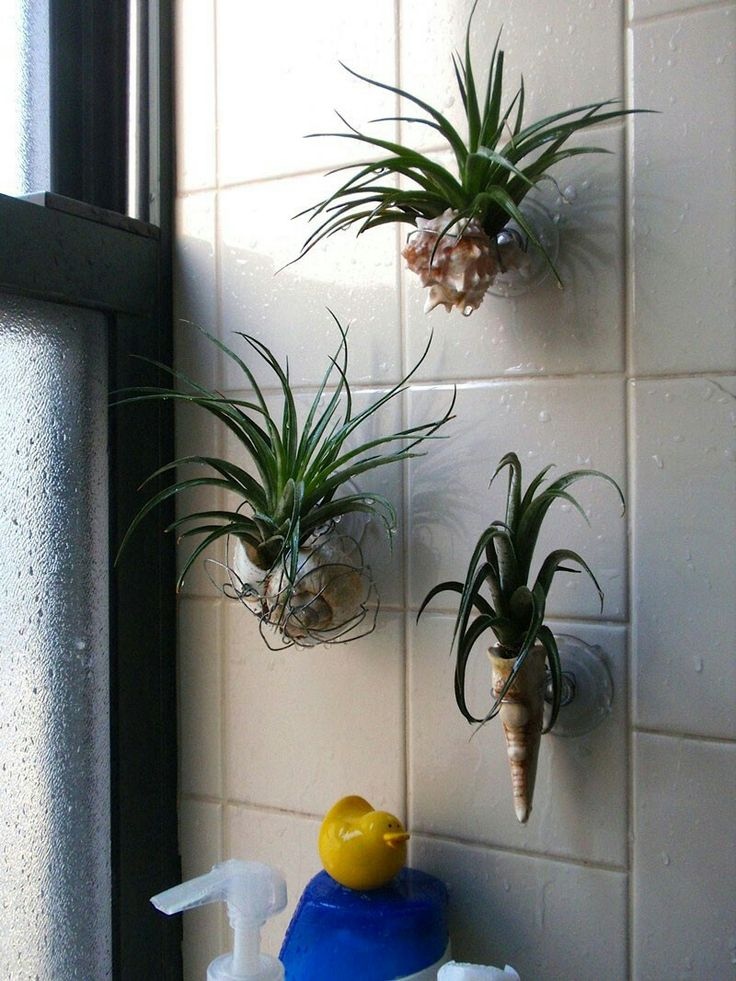
Natural humidity and indirect light make bathrooms surprisingly ideal for air plants (Tillandsia spp.). Unlike traditional houseplants, these epiphytes don’t need soil. Instead, they absorb moisture and nutrients directly through their leaves. Weekly misting or a short soak every 7–10 days helps them stay healthy in bathroom environments. They thrive when placed near windows or on open shelves with airflow. These sculptural, low-maintenance plants come in various forms, adding texture and personality to small spaces without cluttering surfaces. They’re also non-toxic, making them safe around pets. Rotate them occasionally to ensure balanced exposure to light. Regular cleaning of their leaves keeps dust buildup minimal, ensuring optimal absorption. Given their versatility and adaptability, air plants are perfect for anyone looking to introduce greenery without fuss. Their soil-free habit aligns seamlessly with modern bathroom aesthetics.
Bird’s Nest Fern (Asplenium nidus)
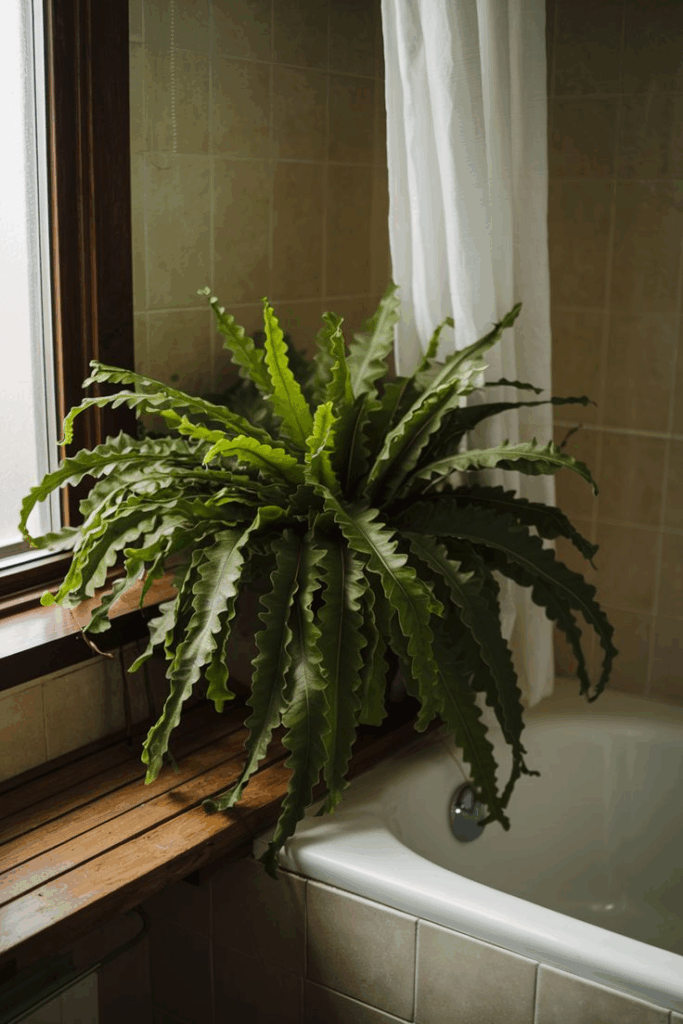
Moisture-loving and lush, bird’s nest ferns (Asplenium nidus) bring a tropical vibe to bathroom corners or countertops. These ferns are admired for their large, rippled fronds that radiate from a central rosette, mimicking a bird’s nest. They prefer consistent humidity and indirect light, making steamy bathrooms a fitting environment. Unlike more temperamental ferns, bird’s nest varieties are more forgiving of occasional missed watering. Keep the soil moist but not soggy, and avoid watering directly into the center, which can lead to rot. Placement away from direct sunlight prevents leaf scorching while encouraging vibrant green growth. These ferns do well in hanging baskets or decorative pots, complementing both minimalist and boho interiors. With regular misting and protection from cold drafts, they maintain their vivid appearance year-round. Their soft, sculptural look contrasts beautifully with hard bathroom surfaces like tile or stone. For renters or homeowners seeking texture without the upkeep of flowering plants, bird’s nest ferns offer a naturally elegant solution.
Spider Plant (Chlorophytum comosum)
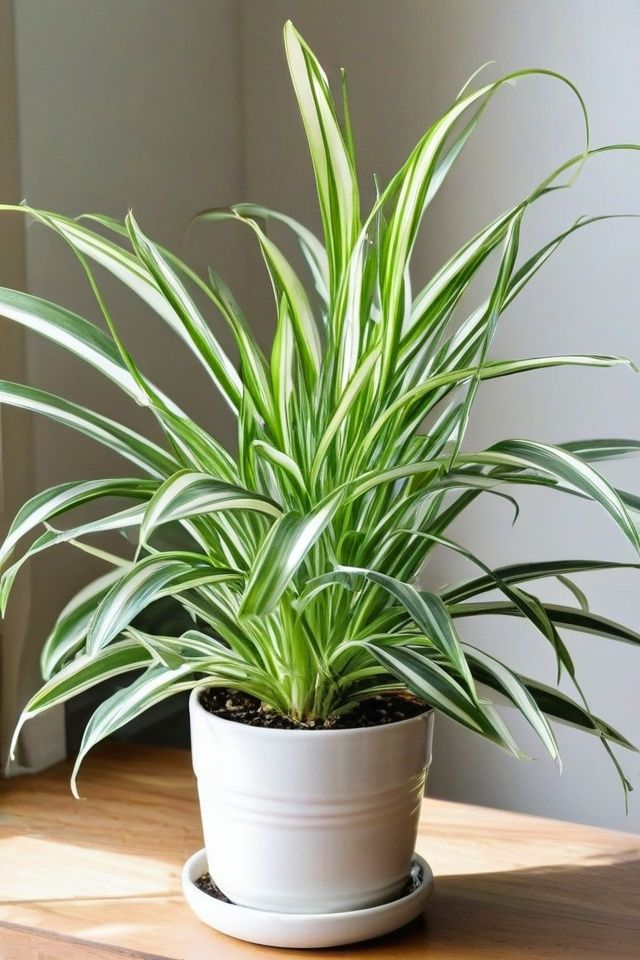
Considered one of the easiest houseplants to care for, the spider plant (Chlorophytum comosum) thrives effortlessly in bathrooms. Its arching, variegated leaves add lively movement, especially when suspended in hanging baskets or perched on high shelves. Spider plants benefit from indirect light and naturally moist air, making bathrooms an ideal setting. They’re resilient to occasional neglect, rebounding quickly with regular watering and indirect sun. Beyond their aesthetic appeal, spider plants are also known for purifying indoor air by absorbing toxins like formaldehyde and carbon monoxide. Small plantlets or “spiderettes” grow from mature plants, allowing for easy propagation and sharing. Avoid placing them in low-light corners for extended periods, as this may reduce their variegation. Choose containers with drainage holes to prevent root rot. With their cheerful presence and low-maintenance needs, spider plants suit busy households or students living in dorm-style settings. Their air-purifying qualities and visual charm make them a top choice for bathroom greenery.
Snake Plant (Sansevieria spp.)
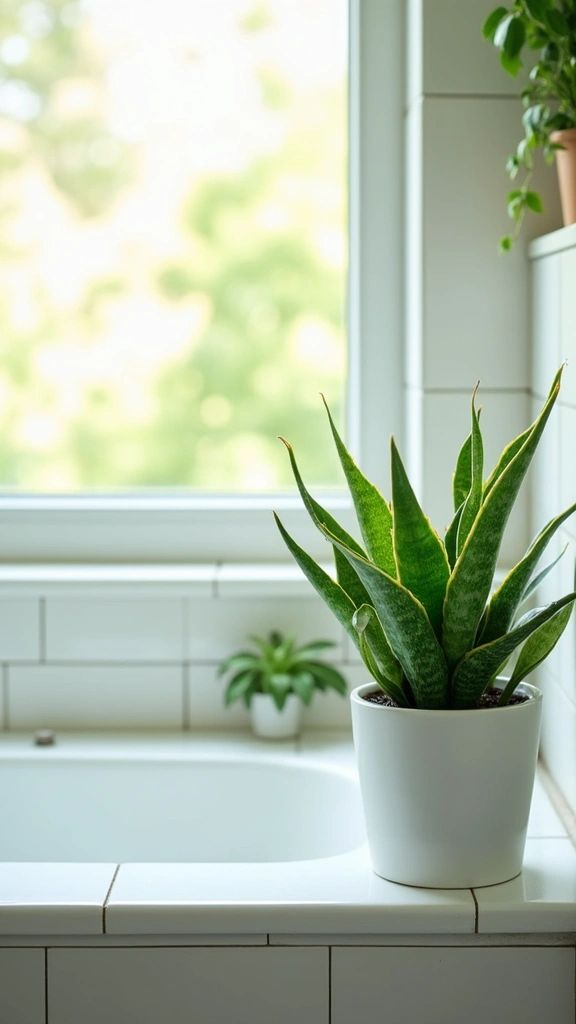
Durability and style converge in the snake plant (Sansevieria spp.), often praised for its ability to thrive under neglect. With upright, sword-like leaves and bold variegation, snake plants suit modern, minimalist, or industrial bathroom designs. They tolerate low light, infrequent watering, and fluctuating humidity—perfect for bathrooms that don’t get daily use or lack windows. Overwatering is their primary threat, so allowing the soil to dry out between waterings is crucial. Their architectural form makes them a striking focal point on floors or ledges, and they also filter airborne pollutants like benzene and xylene. Snake plants grow slowly but steadily and require little attention beyond occasional leaf wiping. For shared households or small apartments, this low-maintenance plant offers style without the stress. Whether standing tall in a ceramic pot or grouped with smaller foliage for contrast, snake plants offer structure, resilience, and beauty in one package. Their forgiving nature makes them a reliable bathroom staple.
Lucky Bamboo (Dracaena sanderiana)
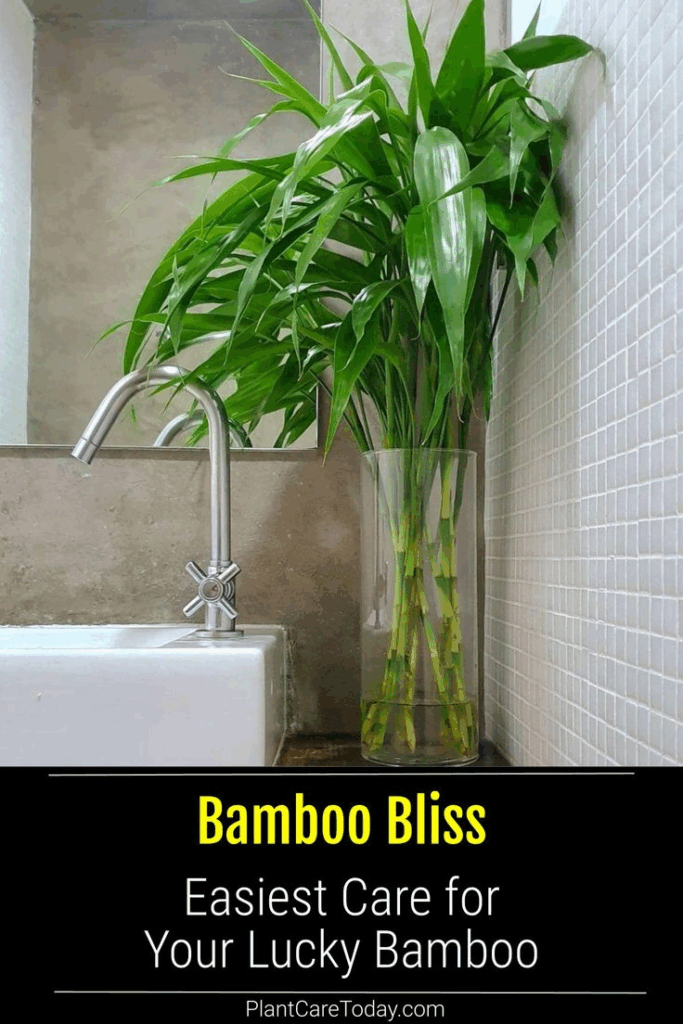
Sculptural and symbolic, lucky bamboo (Dracaena sanderiana) is a popular choice for bathrooms where space and light may be limited. Though commonly associated with water culture, it’s technically a dracaena, not true bamboo. It thrives in filtered light and doesn’t require soil—just a container with clean, chlorine-free water and pebbles for support. Change the water every one to two weeks to avoid algae growth. Lucky bamboo is often chosen for its association with positive energy and feng shui principles. Twisted or spiral stems add a decorative element that complements glass or stone bathroom accents. Avoid placing it in direct sunlight, which can scorch its leaves. It’s highly adaptable to both small counters and floating shelves, where its vertical lines can add height to tight areas. While low-maintenance, it’s still sensitive to chemicals in tap water, so distilled or filtered water is ideal. With its symbolism and ease of care, lucky bamboo is both meaningful and practical.
Pothos (Epipremnum aureum)
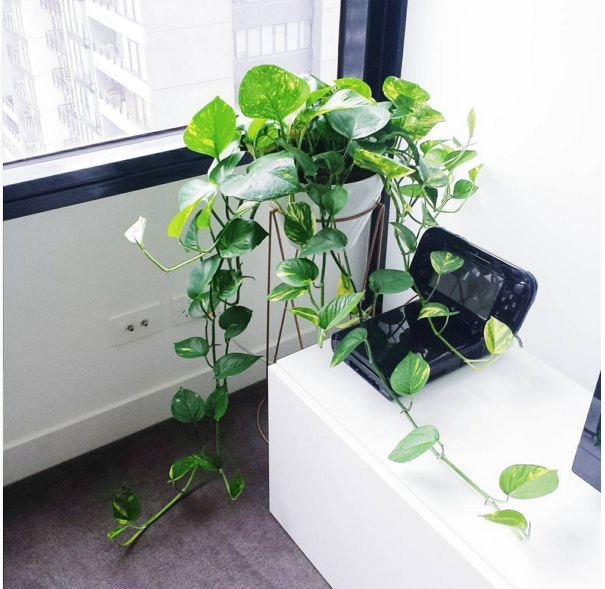
Vining and versatile, pothos (Epipremnum aureum) adapts well to the humid, low-light conditions of most bathrooms. Known for its trailing heart-shaped leaves, this plant brings a soft, cascading texture to shelves, shower rods, or wall-mounted planters. Golden, marble, or neon varieties add subtle color without overpowering the decor. Pothos is forgiving of occasional missed waterings and grows quickly with basic care—just allow the soil to dry out between waterings and prune leggy stems for a fuller look. Its ability to filter indoor air is an added bonus, improving overall air quality. For pet owners, it’s important to keep it out of reach, as pothos is toxic when ingested. Rotate the pot occasionally to encourage balanced growth and avoid sunburn. Bathrooms with small windows or frosted glass offer just the right filtered light for pothos to flourish. Stylish and stress-free, this plant is ideal for first-time plant owners or anyone with a packed schedule.
Peace Lily (Spathiphyllum spp.)
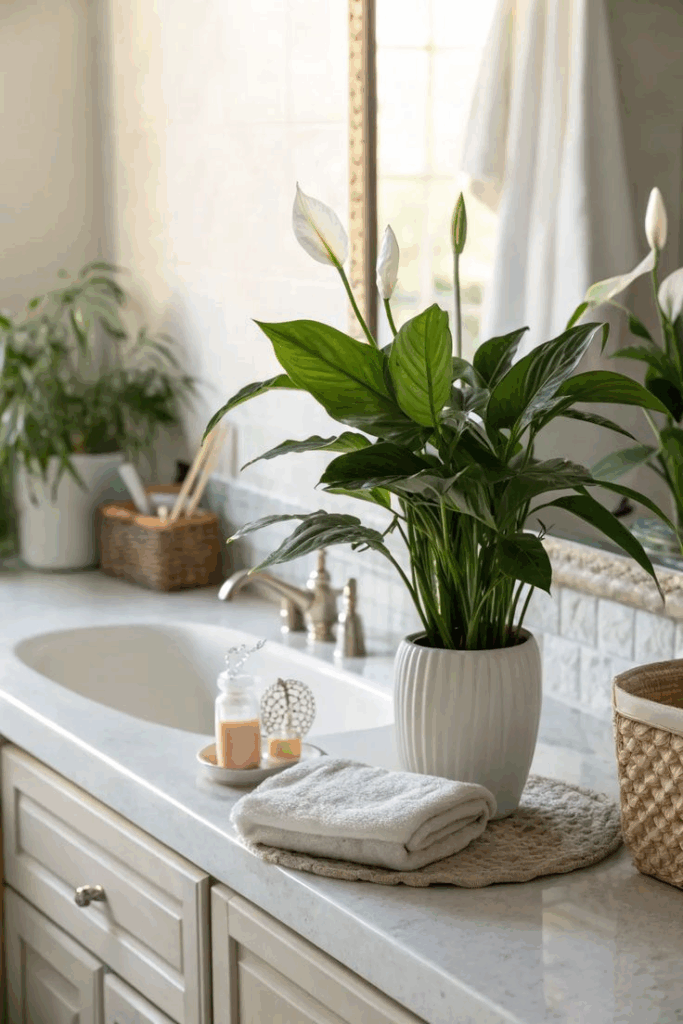
Tropical-looking and tolerant of low light, the peace lily (Spathiphyllum spp.) is an elegant option for enhancing bathroom ambiance. Its broad, glossy leaves and creamy white spathes create visual contrast against neutral walls or tiling. Peace lilies thrive in high-humidity settings and require moderate, indirect light. Overwatering can be a concern—let the top inch of soil dry out before the next watering. Their strong air-purifying qualities help remove common household toxins, supporting a cleaner atmosphere. These plants occasionally droop when thirsty, offering a visual cue for hydration. Use a container with proper drainage and avoid cold drafts to prevent leaf damage. Peace lilies bloom intermittently with the right balance of moisture and light, adding interest to bathroom spaces year-round. For busy individuals seeking greenery that doubles as an air purifier, peace lilies offer a functional and visually appealing solution. Just be cautious if pets share your space, as the plant can be mildly toxic when consumed.
Pitcher Plant (Nepenthes spp.)
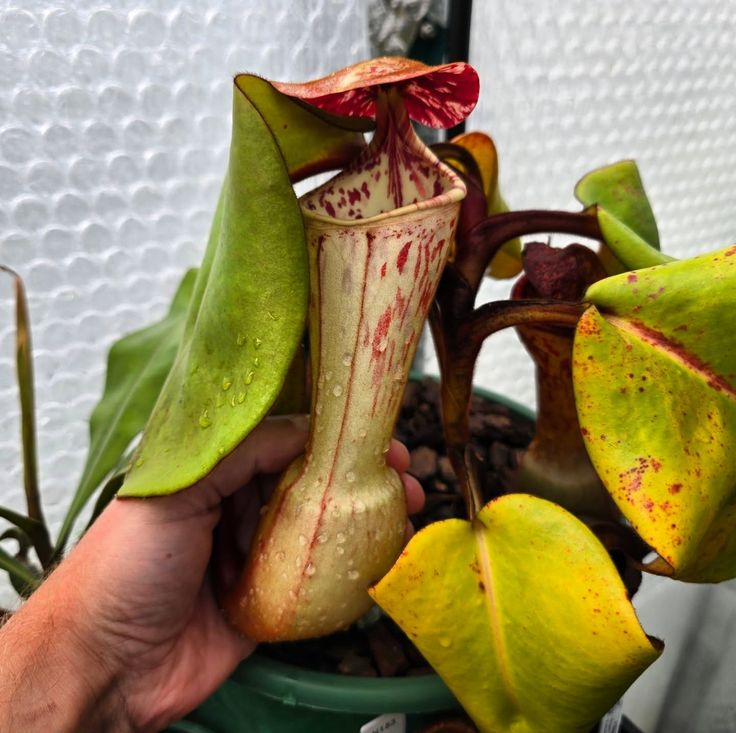
Unconventional yet fascinating, the pitcher plant (Nepenthes spp.) offers a unique take on bathroom greenery. Unlike most houseplants, this carnivorous variety attracts and digests insects using modified pitcher-shaped leaves. Bathrooms provide the humidity pitcher plants need, along with indirect light that mimics their natural rainforest environment. They grow well in hanging planters or raised pots where their tendrils can cascade naturally. Use distilled water and avoid fertilizing with standard houseplant food, as these plants obtain nutrients from their prey. The visual drama of their pitchers adds intrigue and texture to sterile bathroom settings. Keep them away from air vents or dry areas, as they dislike sudden drops in humidity. For those interested in rare and conversation-worthy plants, pitcher plants deliver both style and biological curiosity. Their unique functionality and sculptural form bring a wild touch to indoor gardening, particularly in bathrooms that already lean toward bold decor or nature-inspired elements.
String of Pearls (Senecio rowleyanus)
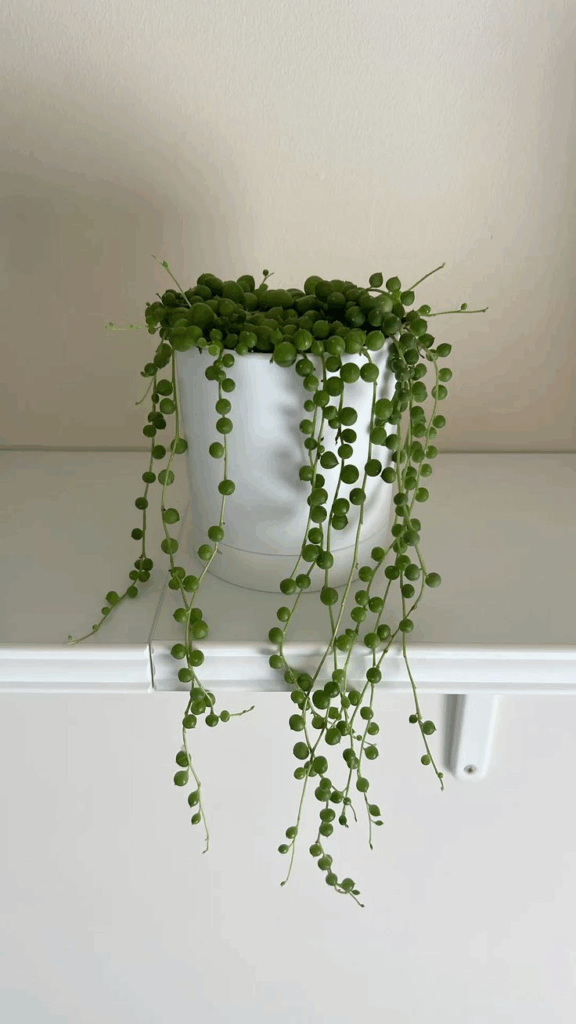
Compact and eye-catching, string of pearls (Senecio rowleyanus) introduces a whimsical yet elegant vibe to any bathroom space. Its bead-like foliage trails gracefully from hanging pots or elevated shelves, adding vertical interest without crowding the counter. These succulents prefer bright, indirect light and minimal water, thriving in well-draining soil. Overwatering is the primary concern, so let the soil dry thoroughly between waterings. High humidity won’t harm it, but good airflow is essential to prevent rot. Pinching the stems occasionally encourages fuller growth, and propagation from cuttings is straightforward. While not suitable for very dark bathrooms, those with frosted windows or skylights provide enough ambient light. Though delicate in appearance, this plant is resilient when given the right conditions. For visual interest with minimal care, string of pearls delivers impact in small doses. Just ensure it’s kept out of reach of pets and children, as the plant can be mildly toxic if ingested.
Philodendron (Philodendron spp.)
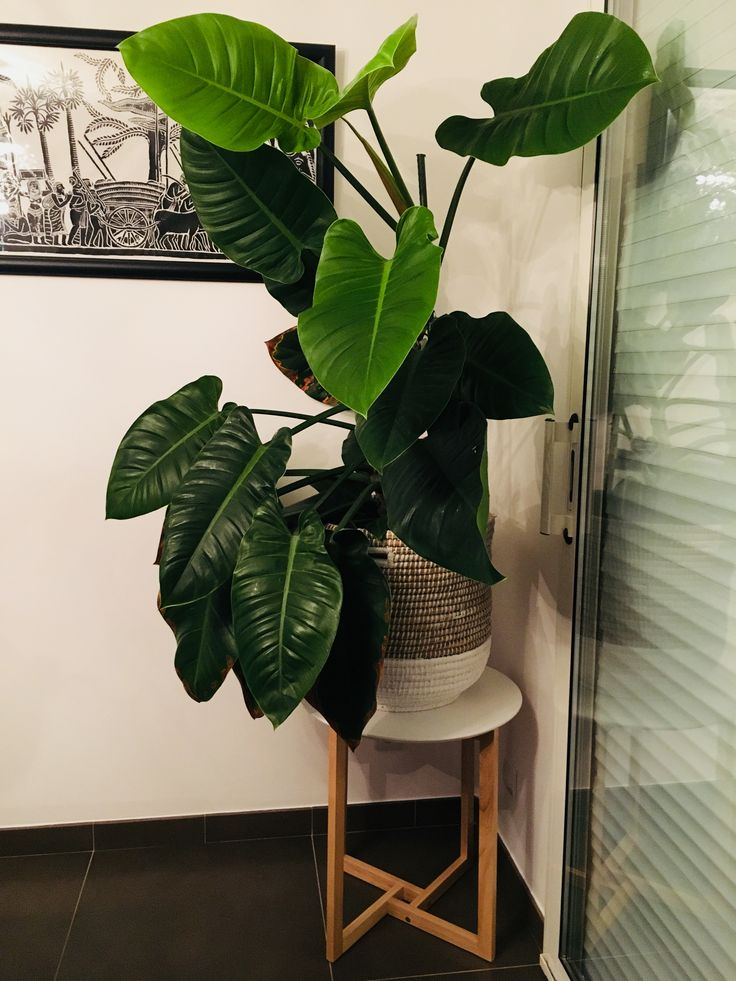
Among the most adaptable indoor species, philodendron (Philodendron spp.) easily suits various bathroom styles and sizes. Known for their lush, heart-shaped leaves and vining or upright forms, philodendrons thrive in indirect light and warm, humid conditions. Their forgiving nature means even occasional neglect won’t drastically affect their health. Soil should be kept slightly moist, with good drainage to avoid root rot. Wipe leaves regularly to maintain shine and support photosynthesis. Philodendrons also help improve indoor air quality, filtering out pollutants like formaldehyde. Popular varieties such as ‘Heartleaf’, ‘Brasil’, and ‘Xanadu’ offer visual diversity and texture. These plants do well in hanging baskets, trailing from shower caddies, or placed on window ledges. Since they are mildly toxic to pets, position them thoughtfully. Whether you’re decorating a modern loft or a compact studio, philodendrons provide reliable, low-maintenance greenery with vibrant presence. Their blend of ease, beauty, and air-purifying traits makes them a staple in plant-friendly bathrooms.
Moth Orchids (Phalaenopsis)
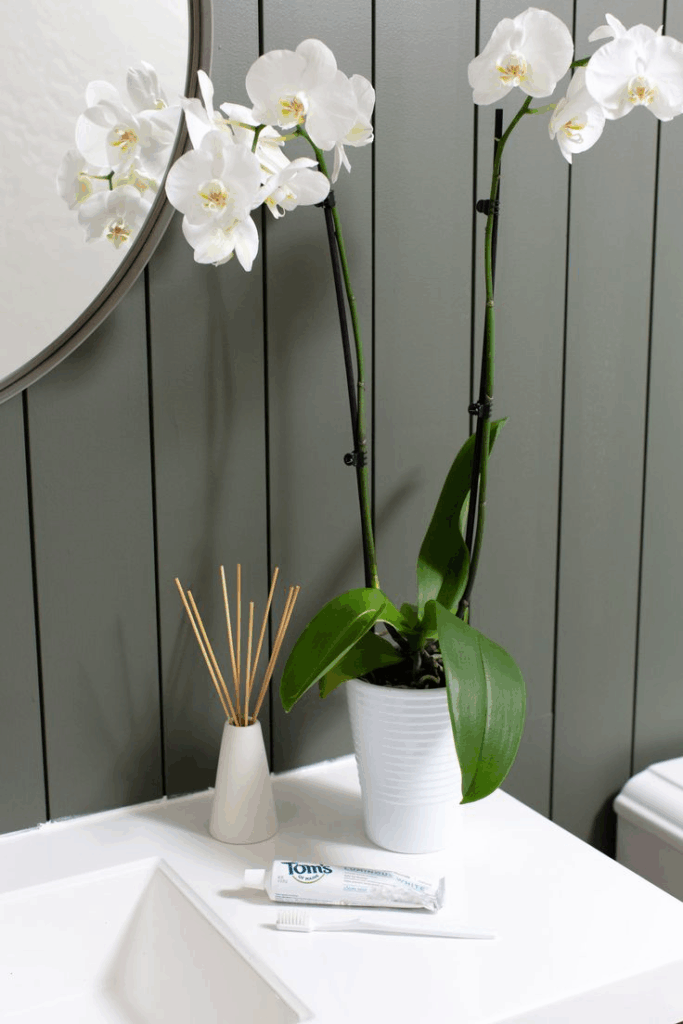
Known for their graceful blooms, moth orchids (Phalaenopsis) bring a touch of refined beauty to bathroom settings. These orchids thrive in bright, indirect light and warm, humid conditions—making a steamy bathroom one of the best places for long-lasting blooms. With proper care, a moth orchid can bloom for up to three months, making it one of the more rewarding indoor flowering plants. Water sparingly once the potting mix dries out, and avoid letting water pool around the crown to prevent rot. Use orchid-specific bark mix rather than traditional potting soil. Their arching flower spikes make a dramatic impact when placed near mirrors or windowsills, adding elegance without demanding constant attention. These orchids are also ideal for compact vanity spaces, adding color where traditional plants may seem bulky. Regular misting and indirect light are enough to keep them healthy. Moth orchids work beautifully as gifts or long-term décor in modern, romantic, or spa-inspired bathrooms.
Boston Fern (Nephrolepis exaltata)
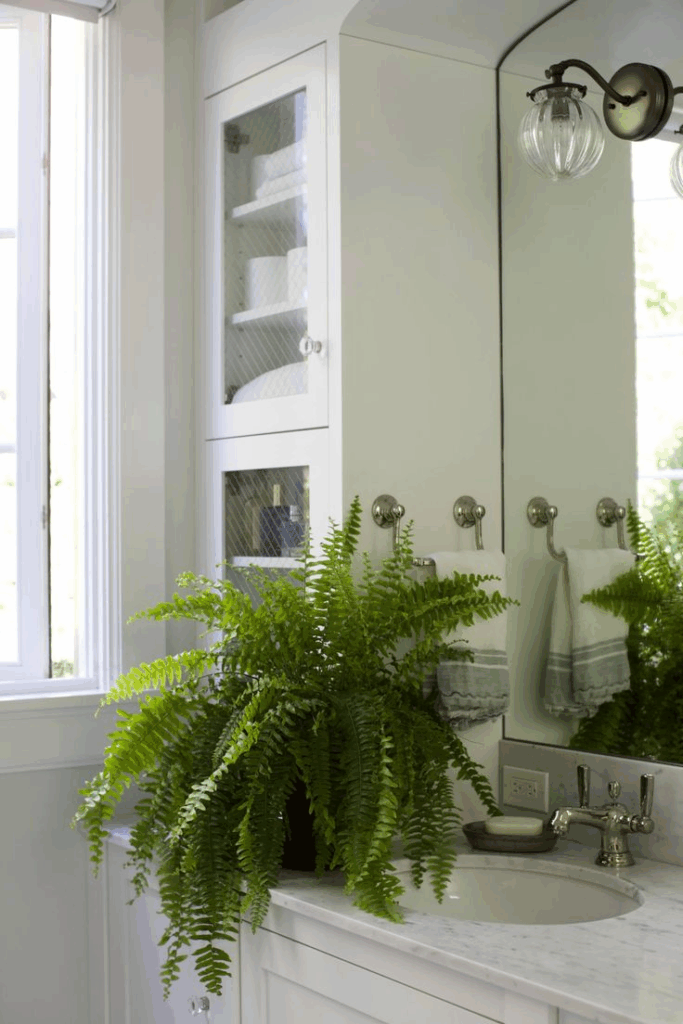
Feathery fronds and a vibrant green hue make Boston ferns (Nephrolepis exaltata) an inviting addition to moisture-rich bathrooms. These ferns flourish in humid environments with indirect light, making bathrooms with small windows or skylights a practical match. They prefer evenly moist soil, so avoid letting the pot dry out completely between waterings. Mist the fronds regularly to prevent browning tips and maintain lush growth. Boston ferns benefit from occasional pruning to remove older fronds and encourage bushier growth. Hanging baskets or elevated shelves allow their arching foliage to cascade beautifully, creating a spa-like atmosphere. They’re sensitive to dry indoor air, so bathrooms offer the ideal conditions for long-term success. These ferns are non-toxic and pet-friendly, making them a responsible choice for households with animals. For those seeking traditional greenery with a full, graceful look, Boston ferns bring timeless charm with natural air-purifying benefits.
Staghorn Fern (Platycerium spp.)
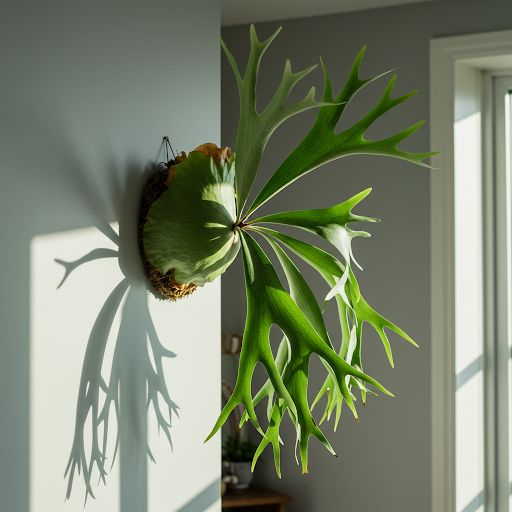
Architectural and artistic, staghorn ferns (Platycerium spp.) stand out with their antler-like fronds and wall-mount-friendly form. These epiphytes naturally cling to trees in their native habitat, so they do exceptionally well when mounted on wood plaques or placed in hanging baskets. High humidity and bright, filtered light are essential—two things bathrooms often supply in abundance. Mist them several times a week and soak the mounting medium when it feels dry. They don’t require soil, which helps eliminate mess in tighter spaces. Ideal for vertical decor, staghorn ferns double as living wall art. Their sculptural shape makes them suitable for minimalist and eclectic interiors alike. With proper care, they’ll reward you with vigorous growth and bold texture. While not the most beginner-friendly plant, staghorn ferns are a rewarding choice for plant lovers seeking unique focal points in their green collections.
Aloe Vera (Aloe vera)
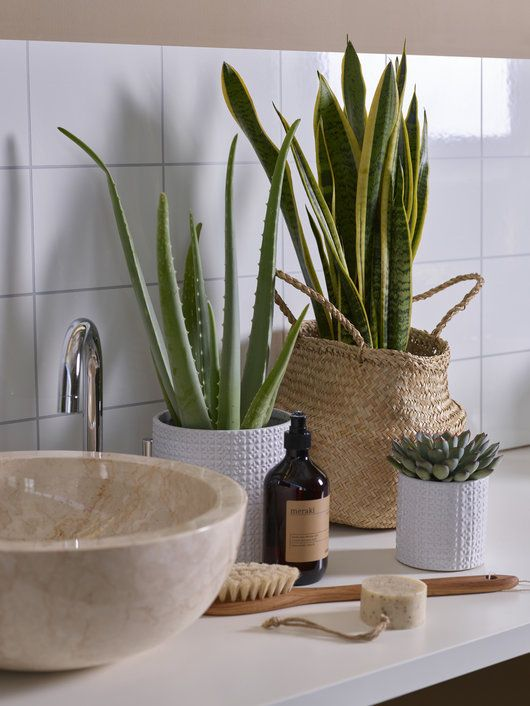
Known for its soothing gel and healing properties, aloe vera (Aloe vera) is a practical and attractive option for sunny bathroom windowsills. This succulent thrives with bright, indirect light and minimal watering, making it suitable for those with busy routines. Allow the soil to dry out completely between waterings, and ensure the container has proper drainage. Aloe vera stores water in its thick, fleshy leaves, so it’s important to avoid excess moisture, which can lead to rot. Its clean, architectural shape complements modern or Scandinavian-inspired spaces, while its medicinal value adds functional appeal. Snap a leaf to soothe skin irritation or sunburn, keeping self-care literally within reach. While not suited for dark or windowless bathrooms, aloe vera is ideal for naturally lit spaces where it can bask in daily light. Its dual role as both decor and natural remedy makes aloe a smart addition to a functional wellness-focused bathroom.
Eucalyptus (Eucalyptus cinerea)
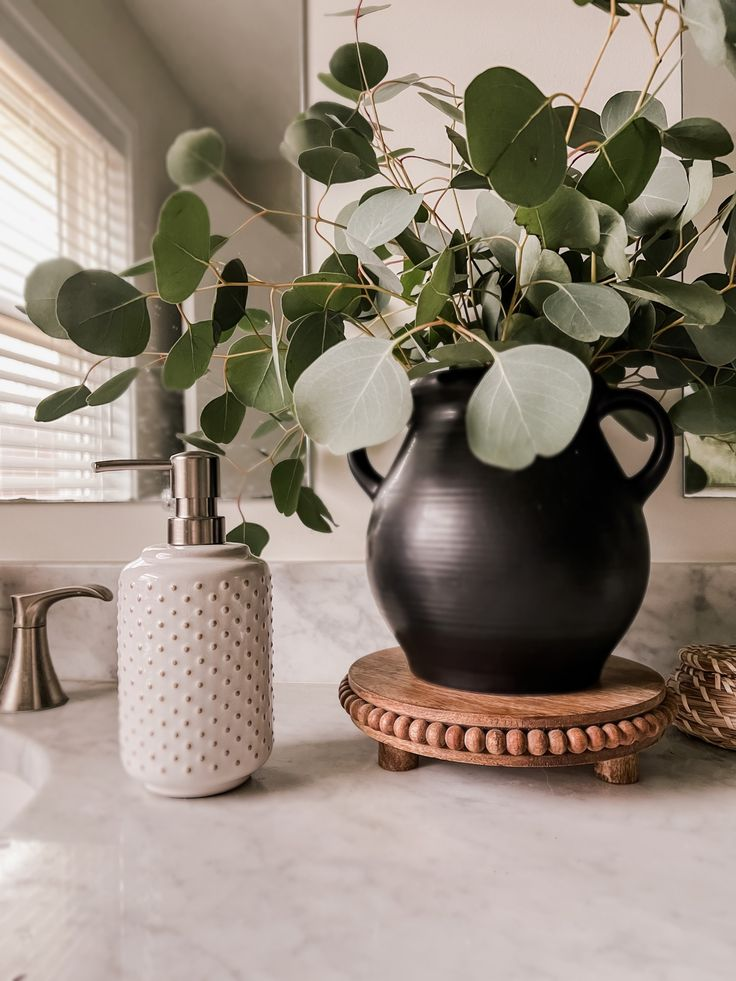
Energizing and fragrant, eucalyptus (Eucalyptus cinerea) adds a spa-like freshness to bathroom interiors. This silvery-leaved plant thrives in bright, indirect light and benefits from regular misting in humid conditions. Though often sold as cut stems, potted eucalyptus can be grown indoors with some care and attention. It prefers well-draining soil and minimal watering once established. Allow the top inch of soil to dry out before watering again. Eucalyptus naturally deters pests and releases a crisp, invigorating scent when leaves are gently crushed or exposed to steam. Position it on a shelf or near a window where air circulation is good. This plant tends to grow tall, so occasional pruning helps maintain a manageable size. Best suited for bathrooms with good ventilation and adequate sunlight, eucalyptus offers a refreshing sensory element and a dose of visual serenity. It’s ideal for those who enjoy natural aromas and a fresh, clean aesthetic.
